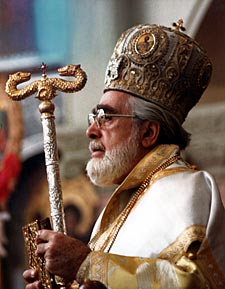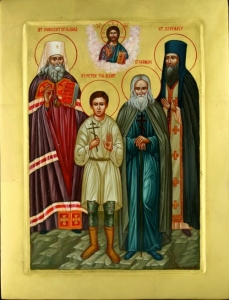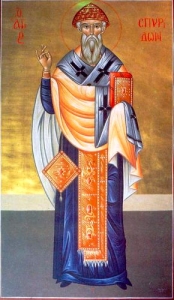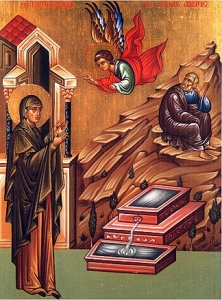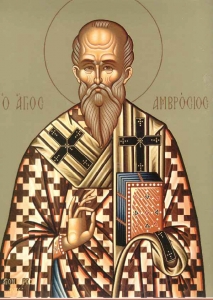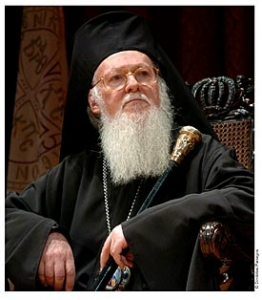Question: Is ours a Church or a Social Club? This should be one of the first questions we ask. What is our parish and why does it exist? To comprehensively seek the answers these questions, I think we need to look into our background. I will centre the discussion on the Greek communities; only because I know them best. But, I truly believe that my remarks hold true for Arab, Russian, Ukrainian, Serbian(or fill in your own ethnic group) Orthodox Churches. When we look into the past, all our Churches were social clubs in the past. Why? Our churches were made up of immigrants who transplanted their faith from the Mother countries. God bless them for their sacrifices and may their memories be eternal! These were the pioneers, clergy and laity who formed and planted our parishes. They needed each other and for the most part stuck together. That is excluding the political schisms, which often reflected old country politics. Truly, they needed the Church to be their social glue. They banded together with the communities as the focal point of their social life. Early in our American experience very few could join country clubs or other civic endeavors, most worked long hours and spoke little English and always with accents. Because of these factors and many more, the Churches were the social outlets. The families spent the majority of their time at Church sponsored activities or events. That was then. Today, we are in our fourth or fifth generation in this country; our social, educational and financial integration in the fabric of American life is complete. The Church is no longer our only social outlet. Our relationship to the Church has changed, but have our attitudes changed. What is the role of the Church in our lives? There is no doubt that as a Christian community we need fellowship! The question is: “Do we seek to have the Church fulfill deep spiritual needs or do we still consider it a social club where we go to get our ethnic fix? This is the first and most basic question, we must ask ourselves. Church or social club? Which is it? At this time of year as we prepare for the Nativity of Our Lord and as our families gather to celebrate this joyous festival perhaps we can begin to ask each other serious questions about where we want to take our Church. After all, we are the Church!]]>

ORTHODOX PRAXIS
Father George Bithos' weblog
Traveling to Bethlehem (12 December 2010)
All these icons look alike! How many time have we Orthodox heard this comment about icons. The reality is that there are subtle differences, often with great theological meaning. Today, is one of these times. The saint who we commemorate today is St Spyridon of Thymithous. Look closely, what is different about this icon? We see the familiar icon of a hierarch of the Church with his ecclesial vestments and carrying the Gospel book. Not much different from many icons we see in the Church. But, when we look closely we notice a strange hat on the figure. Most icons of the hierarchs are bare headed, what is the meaning of this strange triangular hat. By reading a bit, we discover that St. Spyridon had been a shepherd and was elected bishop because of his great piety. What did Spyridon do then? According to the Prologue of Ohrid, he continued to live simply and care for his livestock. He also shepherded his spiritual flock the people of his diocese. He was devoted to being a shepherd of souls. As we know, St. Spyridon was present at the first Ecumenical Council. A country bishop from a backwater diocese, really an unsophisticated, uneducated delegate. As his story tells us, the Holy Spirit enlightened Spyridon to expound the true theology of Christ, fully man and fully God. While he preached the truth, Arian one of the most erudite scholars in the Empire was put to shame. A shepherd and a bishop; perhaps our modern hierarchs can remember that they are at their hearts – simple shepherds. ]]>
Traveling to Bethlehem (09 December 2010)
“Can you tell me the differences between the Roman Catholic Church and our Church?’ I cannot tell you how often I have been asked this question! Well, today is a big part of that answer. Today, we commemorate The Conception of the Theotokos by Saints Anna and Joachim. Last night, I wrote about this holy couple’s great desire to have God intercede in their lives, listen to their prayers and bless them with a child. Not unlike Sara and Abraham and other Old Testament couples, Joachim and Anna were advanced in age, perhaps too advanced. But, God did heard their prayers and allowed them to conceive. This is the first important point that must be noted, the Virgin Mary was conceived in the normal biological manner; the product of the loving union between a husband and wife. God’s blessing and the intervention of His Holy Spirit enabled this to happen. This is one of the reasons Joachim and Anna are the image of married bliss for Orthodox couples. The Conception of the Theotokos is a source of another divergence in theology between Orthodoxy and Catholicism. We, Orthodox, do not believe in the “Immaculate Conception of the Virgin Mary.” We must be very careful here! We (Orthodox) DO believe that Our Lord Jesus Christ was Immaculately Conceived. Christ being Fully God and Full Man was born without sin. God can not have sin. But this was not the case for his mother, the Theotokos. The Orthodox Church teaches that Mary was born with sin, just as all of humanity. Furthermore, the Church believes that Mary lived a life of purity and she found favour with God because of her righteousness. She was cleansed of her sin by the Spirit of God at the Annunciation, so that she could carry the Christ Child within her body. Turning to the Roman Catholic understanding, it started to divert from the Orthodox very early. The Western Church began to develop the teaching of the Immaculate Conception of the Virgin. Their teaching states that God, fore-knowing, that Mary would bear the Christ; provided that she was born without sin. This teaching was a pious belief until 1854, when Pope Pius lX declared the teaching – dogma of the Catholic Church. This decree was then ratified by Vatican I in 1870. So we can see this is a relatively new doctrine. This is a rather simplistic explanation. There are other deeper theological implications, but nonetheless, the Immaculate Conception of the Virgin Mary is a major area of theological disagreement between the two Churches.]]>
Traveling to Bethlehem (08 December 2010)
Today is one of those days of preparation that the Church provides us to get ready for a holiday. Tomorrow, we commemorate the Conception of the Theotokos. Today, we get ready. We have an opportunity to pause and consider the importance of the coming event. Where should we look for a better understanding of the feast? Like many feasts of the Church this occurrence is not documented “in the Bible,” yet it is a significant happening in salvation history. Where does one go to learn about this festival? Where do you start? I decided to ask this question out loud; so that we could learn from each other. We know that the hymns of the Church describe the theology of a feast. What do they say? The Troparion sung at the Vespers for tomorrow speaks of the “bonds of barrenness being loosed” and of the “prayers” of Joachim and Anna asking for “birth beyond hope.” What do these clues tell us? If we read closely, we see that this couple was without children and beyond the hope of having children, they prayed for God to change their life. In an earlier post, we stated that many of our hymnographers got inspiration from the other writings, from the Christian Apocrypha. The book, the Protevagelium of James, (The Infancy Gospel of James) tells us the story of the birth of the Virgin Mary. We read in the first part of this book about the “prayer of St. Anna.” In her garden, Anna turns to God in her prayer. She describes her barren womb as contrasted to the fruitfulness of the natural creation. Anna begs Our Lord to bless her and allow to “bring forth fruit in her season.” An angel of the Lord appears to St. Anna and informs her that God has heard her prayer. He tells her that she would conceive and give birth to a child. In gratitude, Anna pledges to dedicate her child as a gift to God, since it would be a gift from God. Not only are these ancient sources inspiration for hymnographers; but also for iconographers (as we can see above). The child, which the angel announces is conceived as every child is, as a blessing from God; but this child is a blessing for all of humanity. ]]>
Traveling to Bethlehem (7 Dec. 2010)
Ours or Theirs? Grammatically, this might be an odd construct, but the question is valid. About now, you are probably asking yourself; what is he talking about? Have you ever wondered why we as Orthodox have difficulty accepting pre-schism western saints as ours? This is most common, I believe, it applies more when the saint in question is a famous or well known western saints. Today is a good example: St. Ambrose of Milan of St. Augustine. The more significant the contribution of a saint to the history of the western church the less we tend to recognize them. A few days ago, both Churches commemorated the memory of St. Cecelia. The question would then follow: “Is she one of ours?” I had the privilege of studying in England, in a small town called Durham. In the famous Durham Cathedral are entombed several Saints Cuthbert of Lindisfarne, Venerable Bede and King Oswald of North Umbria. My first reaction when I saw the tombs was to run to an Horologion to check if they were ”kosher.” This type of reaction is complicated by linguistic variations. How many know that St Photini, the Samaritan Woman, is called St Svetlana in Russia, St. Claire in France and St. Fiona in Celtic countries. Today the example of this possible confusion is St. Ambrose. St Ambrose fought Arianism being influenced by Athanasius, corresponded with St Basil and was a great influence on St. Augustine of Hippo. When we look at Saints think across the universal Church. Theirs are ours and ours are theirs and we are all enriched by this understanding.
]]>
Traveling to Bethlehem (30 November 2010)
Traveling to Bethlehem (29 November 2010)
]]>



